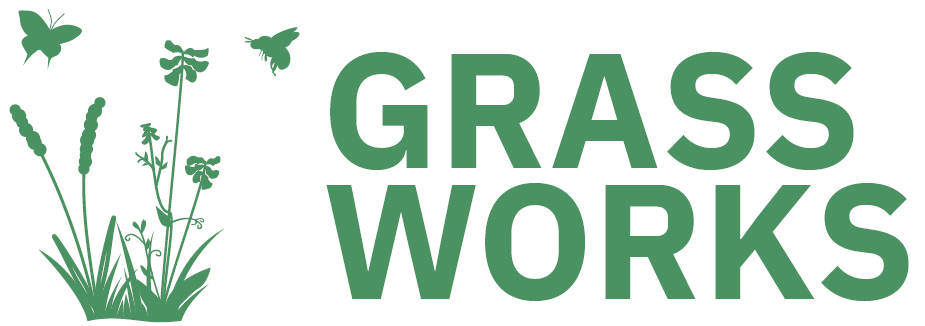About GRASSWORKS
Project background
Grasslands are ecosystems such as meadows and pastures. Biodiverse grasslands provide habitat for a wide range of species, including pollinators, as well as many other ecosystem functions and services such as carbon sequestration, water regulation, and food supply. Yet grasslands are in dramatic decline, making them one of the most threatened ecosystems on earth. In Lower Saxony, Germany, for example, grasslands have almost halved over the last few decades and only 10% of them still provide habitat for associated species. The main reasons for this decline in grasslands and their species are the conversion of grasslands to arable land or other land uses such as building land or forests, the intensification of their management, or the abandonment of grasslands. Species-rich grasslands, however, are the result of centuries of extensive agricultural land use by humans, so their biodiversity is a by-product of this traditional land use.
Therefore, to conserve and restore species-rich grasslands, they must continue to be managed extensively, which means regular but infrequent mowing or grazing and the avoidance of fertiliser. To achieve this, the human dimension and the social system must be included in the restoration process, as the stability and biodiversity of these grassland systems are based on the interdependence of the ecosystem and the social system in which it is embedded. Therefore, integrated approaches to socio-ecological restoration of grasslands, considering social, ecological, economic and governance factors, are needed to successfully restore grasslands and contribute to reversing the severe decline of grasslands and their species. In this context, the Grassworks project analyses the factors leading to successful grassland restoration in Germany.
Researchers from the fields of ecology, social science, sustainability science, environmental economics, and governance are working together with the German Association for Landcare Management to better understand how and under what conditions restoration projects are successful (and when they are less successful). Grassworks takes an inter- and transdisciplinary approach with strong disciplinary expertise and social-ecological integration and synthesis.
The project focuses on three model regions in North, Central and South Germany, which differ in their economic, social-ecological, and socio-economic conditions. Two approaches will be followed in each model region:
Post-hoc analysis
of 40 existing restoration sites (already restored) along with 10 negative1 and 10 positive reference sites per model region, each including their ecological, social-ecological, and socio-economic assessment.
Transdisciplinary implementation
of restoration projects in one living lab per model region in collaboration with local stakeholders and cross-linked with relevant actors at state and federal level.
Model Region North
Iserlowland, Southern heathModel Region Centre
Biosphere Reserve Karst Landscape Southern HarzModel Region South
Donau-Isar lowland, Lower BavariaResearch components in each model region
Restored sites
Positive reference sites
Negative reference sites
Living lab
Our central hypothesis is that successful socio-ecological restoration depends on the extent to which both ecological complexity and engagement of diverse stakeholders are considered in the restoration process.
We hypothesize that the higher the ecological complexity and the engagement of diverse stakeholders are, the higher the social-ecological success of restoration will be.

Restoration success as an outcome is shown as a colour gradient, moving from low success based on low ecological and social engagement (red), through intermediate success (yellow), to high restoration success based on high scores on both axes (green). The colour gradient therefore represents a third axis.
Overall, we are interested in exploring the following
Research questions
Which social and ecological drivers influence the restoration of biodiversity (plants, butterflies, and bees) and landscape multifunctionality?
Which social-ecological variables need to be monitored to comprehensively gauge restoration success?
How can better governance systems, and ways of engaging stakeholders, be designed to make restoration more successful?
How do differences in socio-political and environmental context between the three model regions modulate social-ecological restoration success?
- Explanation notes: A negative reference site is a degraded unrestored area. A positive reference site is one that acts as a goal template for what we would like a restored site to develop into. Restoration success will be explicitly assessed using both positive (conventional approach) and negative (unusual approach) reference conditions of other similar grasslands.↩
